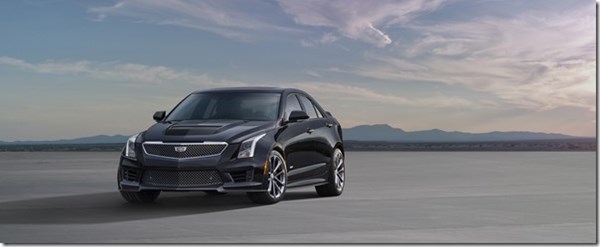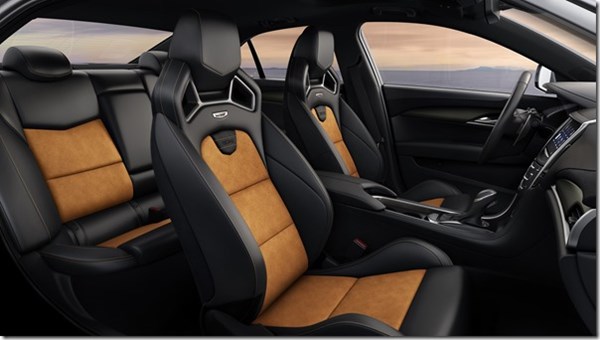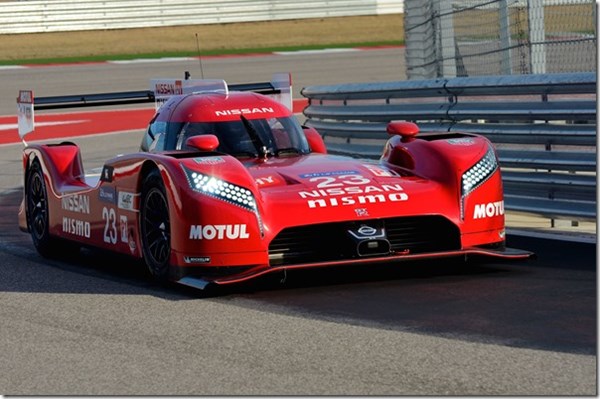Developing the Cadillac ATS-V
This is the 2016 Cadillac ATS-V sedan: The model, not yet on the streets yet (it is coming a bit later this year), also comes as a coupe: The ATS-V, explains Tony Roma, chief engineer of the vehicle (as well as for the CTS-V, the bigger brethren of the ATS-V), is a luxury sedan that can be driven on a daily basis in a comfortable manner. . .or it can go like a bat out of you-know-where on a track, as it offers a 0 to 60 mph time of 3.9 seconds, and it can hit 200 mph.
#aluminum #marketing #interior
This is the 2016 Cadillac ATS-V sedan:

The model, not yet on the streets yet (it is coming a bit later this year), also comes as a coupe:

The ATS-V, explains Tony Roma, chief engineer of the vehicle (as well as for the CTS-V, the bigger brethren of the ATS-V), is a luxury sedan that can be driven on a daily basis in a comfortable manner. . .or it can go like a bat out of you-know-where on a track, as it offers a 0 to 60 mph time of 3.9 seconds, and it can hit 189 mph.
Yes, there is a setting that allows you to adjust the vehicle parameters (e.g., steering, suspension, throttle) for taking the car racing; there is a setting that allows you to drive it to the grocery store without feeling as though you are going to end up with bruised kidneys.

The ATS-V has a V6 under its hood. A hood, incidentally, which is made with carbon fiber, and which has an air-extraction vent that pulls hot air out of the engine compartment and also, Roma explains, helps reduce lift by channeling the air over the roof of the car rather than letting it exit from below.

A V6 and 189 mph?
The ATS-V is the first V-vehicle from Cadillac that has a twin-turbo setup. And the turbines within the turbochargers are not your ordinary run-of-the-mill versions, either: they are produced with low-inertia titanium-aluminide. In addition to which, they’ve developed a patent-pending low-volume charge-cooling system that is not only compact, but which, given its location vis-à-vis the turbos, provides maximized boost pressure post-haste.
And if you’ve got a quick-spooling turbo system, then having titanium connecting rods to reduce inertia of the rotating assembly helps, too.
All told, the 3.6-liter, all-aluminum V6 produces 455 hp and 445 lb-ft of torque.
The transmission options are a Tremec TR6060 six-speed manual with active rev matching or a HydraMatic 8L90 eight-speed automatic with paddle shifters.
The power and performance of the rear-drive vehicle necessitated beefing up the basis structure of the car, as in a unique shock tower-to-plenum brace, a strengthened rocker bulkhead, stronger rear cradle-to-rocker braces, and V-braces for the engine compartment. The result of all of this is 25% greater structural stiffness than a non-V ATS.
Roma talks about this and much more on this edition of “Autoline After Hours.”
John McElroy of Autoline, Greg Gardner of the Detroit Free Press, and I ask Roma about the car and how it was developed. (Yes, they’ve taken it to the Nurburgring.)
In addition to which, McElroy, Gardner and I discuss a variety of other non-ATS subjects, including vehicle sales, where there is a growing preponderance of truck-like vehicles in place of traditional sedans, Super Bowl ads, where there was panelist contention regarding what worked and what didn’t, and the remarkable Nissan GT-R LM NISMO vehicle for Le Mans.

And you can see it all here:
RELATED CONTENT
-
Range Rover Sport SVR Sets Low(ish) Speed Record
This is an interesting record: a Range Rover Sport SVR, which can accelerate from 0 to 60 mph in 4.3 seconds and has a top speed of 174 mph, was recently driven by Ho-Pin Tung, a Chinese-Dutch driver for the Panasonic Jaguar Racing team, on a road in the Hunan Province in China, and set a new record of an average speed of 42.8 mph.
-
Creating a Low-Cost Chassis Architecture
The engineers at Zenos Cars have combined recycled carbon fiber, drinking straws and aluminum to create a chassis for a low-volume sports car.
-
Increasing Use of Structural Adhesives in Automotive
Can you glue a car together? Frank Billotto of DuPont Transportation & Industrial discusses the major role structural adhesives can play in vehicle assembly.


.jpg;width=70;height=70;mode=crop)






